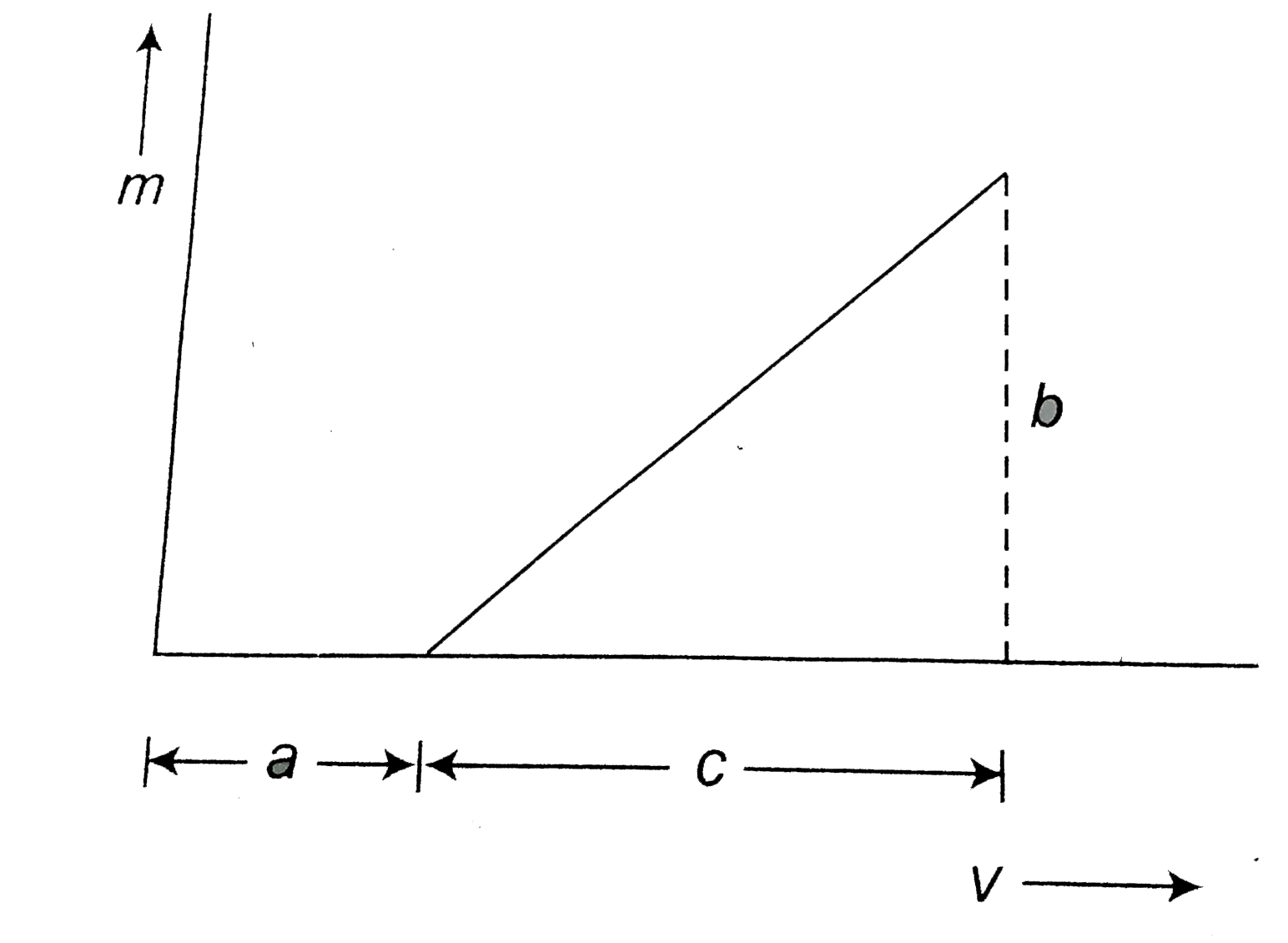The image of a small electric bulb fixed on the wall of a room is to be obtained on the opposite wall 3m away by means of a large convex lens. What is the maximum possible focal length of the lens required for the purpose ?
To find the maximum possible focal length of a convex lens required to obtain the image of a small electric bulb on the opposite wall, we can follow these steps:
Step 1: Understand the Setup
We have two walls in a room that are 3 meters apart. A small electric bulb is fixed on one wall, and we want to obtain its image on the opposite wall using a convex lens.
Step 2: Define the Variables
Let:
- The distance from the lens to the bulb be x (this distance will be negative as per the sign convention).
- The distance from the lens to the image on the opposite wall be v=3−x (this distance will be positive).
Step 3: Apply the Lens Formula
The lens formula is given by:
1f=1v−1u
Where:
- f is the focal length of the lens,
- u=−x (object distance),
- v=3−x (image distance).
Substituting these values into the lens formula gives:
1f=13−x+1x
Step 4: Simplify the Equation
Rearranging the equation:
1f=x+(3−x)x(3−x)=3x(3−x)
Thus, we have:
f=x(3−x)3
Step 5: Maximize the Focal Length
To find the maximum focal length, we need to maximize the function f(x)=x(3−x)3. This is a quadratic function, and we can find its maximum by taking the derivative and setting it to zero.
Step 6: Differentiate and Solve for x
Taking the derivative:
f′(x)=13(3−2x)
Setting the derivative equal to zero for maximization:
3−2x=0⟹x=32=1.5 meters
Step 7: Calculate the Maximum Focal Length
Substituting x=1.5 into the focal length equation:
f=1.5(3−1.5)3=1.5×1.53=2.253=0.75 meters
Conclusion
The maximum possible focal length of the lens required to obtain the image of the bulb on the opposite wall is 0.75 meters or 75 centimeters.
---
We have two walls in a room that are 3 meters apart. A small electric bulb is fixed on one wall, and we want to obtain its image on the opposite wall using a convex lens.
Let:
- The distance from the lens to the bulb be x (this distance will be negative as per the sign convention).
- The distance from the lens to the image on the opposite wall be v=3−x (this distance will be positive).
The lens formula is given by:
1f=1v−1u
Where:
- f is the focal length of the lens,
- u=−x (object distance),
- v=3−x (image distance).
1f=13−x+1x
Rearranging the equation:
1f=x+(3−x)x(3−x)=3x(3−x)
Thus, we have:
f=x(3−x)3
To find the maximum focal length, we need to maximize the function f(x)=x(3−x)3. This is a quadratic function, and we can find its maximum by taking the derivative and setting it to zero.
Taking the derivative:
f′(x)=13(3−2x)
Setting the derivative equal to zero for maximization:
3−2x=0⟹x=32=1.5 meters
Substituting x=1.5 into the focal length equation:
f=1.5(3−1.5)3=1.5×1.53=2.253=0.75 meters
The maximum possible focal length of the lens required to obtain the image of the bulb on the opposite wall is 0.75 meters or 75 centimeters.
Topper's Solved these Questions
- RAY OPTICSBOOK - PRADEEPCHAPTER - RAY OPTICSEXERCISE - Higher Thinking Order
5 Videos
- RAY OPTICSBOOK - PRADEEPCHAPTER - RAY OPTICSEXERCISE - Sample Problem(a)
5 Videos
- RAY OPTICSBOOK - PRADEEPCHAPTER - RAY OPTICSEXERCISE - (NCERT)Long Answer
5 Videos
- PROPERTIES OF BULK MATTERBOOK - PRADEEPCHAPTER - PROPERTIES OF BULK MATTEREXERCISE - Multiple choice questions
7 Videos
- SYSTEMS OF PARTICLES AND ROTATIONAL MOTIONBOOK - PRADEEPCHAPTER - SYSTEMS OF PARTICLES AND ROTATIONAL MOTIONEXERCISE - Assertion- Reason Type questions
20 Videos
Similar Questions
The image of a small electric bulb fixed on the wall of a room is to be obtained on the opposite wall 3m away by means of a large convex lens. What is the maximum possible focal length of the lens required for the purpose ?
View SolutionWhat is the power of a convex lens of focal length 0.5 m?
View Solution
Knowledge Check
A body is located on a wall. Its image of equal size is to be obtained on a parallel wall with the help of a convex leng. The lens is placed at a distance d ahead of second wall, then the required focal length will be:
AOnly d4BOnly d2CMore than d4 but less than d2DLess than or equal to d4
The graps shows the variation of magnification m produced by as convex lens with the image distance v. The focal length of the lens isAbcBcbCaDa,bcA man is sitting in a room at 2m from a wall W1, wants to see the full height of the wall W2 behind him 4m high and 6m away from the facing wall W1. What is the minimum vertical length of mirror on the facing wall required for the purpose?
A4mB2mC3mD1m
The distance between the object and the real image formed by a convex lens is d. If the linear magnification is m, find the focal length of the lens in terms of d and m.
View SolutionA body is located on a wall. Its image of equal size is to be obtained on a parallel wall with the help of a convex leng. The lens is placed at a distance d ahead of second wall, then the required focal length will be:
View SolutionA sharp image of a distant object is obtained on a screen by using a convex lens. In order to determine the focal length of the lens, you need to measure the distance between the :
View SolutionA sharp image of a distant object is obtained on a screen by using a convex lens. In order to determine the focal length of the lens, you need to measure the distance between the :
View SolutionThe image obtained while finding the focal length of convex lens is_____
View Solution
